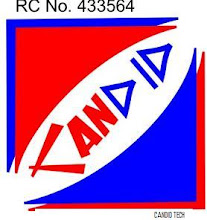Affiliate marketing
From Wikipedia, the free encyclopedia
Jump to: navigation, search
Illustration of the concept of affiliate marketing
Internet marketing
Display advertising
E-mail marketing
E-mail marketing software
Interactive advertising
Social media optimization
Web analytics
Cost per impression
Affiliate marketing
Cost per action
Contextual advertising
Revenue sharing
Search engine marketing
Search engine optimization
Pay per click advertising
Paid inclusion
Search analytics
Mobile advertising
This box: view • talk • edit
Affiliate Marketing is an Internet-based marketing practice in which a business rewards one or more affiliates for each visitor or customer brought about by the affiliate's marketing efforts. It is an application of crowdsourcing.
The Affiliate Marketing industry has four core players at its heart: the Merchant (also known informally as 'Retailer' or 'Brand'), the Network, the Publisher (also known informally as 'the Affiliate') and the Customer. The market has grown sufficiently in complexity to warrant a secondary tier of players, including Affiliate Management Agencies, Super-Affiliates and Specialized Third Parties vendors.
Affiliate marketing overlaps with other Internet marketing methods to some degree, because affiliates often use regular advertising methods. Those methods include organic search engine optimization, paid search engine marketing, e-mail marketing, and in some sense display advertising. On the other hand, affiliates sometimes use less orthodox techniques, such as publishing reviews of products or services offered by a partner.
Affiliate marketing—using one website to drive traffic to another—is a form of online marketing, which is frequently overlooked by advertisers.[citation needed] While search engines, e-mail, and website syndication capture much of the attention of online retailers, affiliate marketing carries a much lower profile. Still, affiliates continue to play a significant role in e-retailers' marketing strategies.[1]
Contents
[hide]
* 1 History
o 1.1 Origin
o 1.2 Historic development
o 1.3 Web 2.0
* 2 Compensation methods
o 2.1 Predominant compensation methods
o 2.2 Diminished compensation methods
o 2.3 Performance marketing
* 3 Multi-tier programs
* 4 From the advertiser perspective
o 4.1 Pros and cons
o 4.2 Implementation options
o 4.3 Affiliate management and program management outsourcing
o 4.4 Types of affiliate websites
o 4.5 Publisher recruitment
* 5 Locating affiliate programs
* 6 Past and current issues
o 6.1 E-mail spam
o 6.2 Search engine spam
o 6.3 Adware
o 6.4 Trademark bidding
o 6.5 Lack of self-regulation and collaboration
o 6.6 Lack of industry standards
+ 6.6.1 Certification and training
+ 6.6.2 Code of conduct
o 6.7 Threat to traditional affiliate networks
o 6.8 Marketing term
o 6.9 Sales tax vulnerability
o 6.10 Cookie stuffing
* 7 Affiliate services
* 8 See also
* 9 References
* 10 External links
YOU CAN ORDER FOR A COPY OF THIS EXPOSE` CALL NOW +2348060449215
Thursday, October 22, 2009
Subscribe to:
Comments (Atom)
